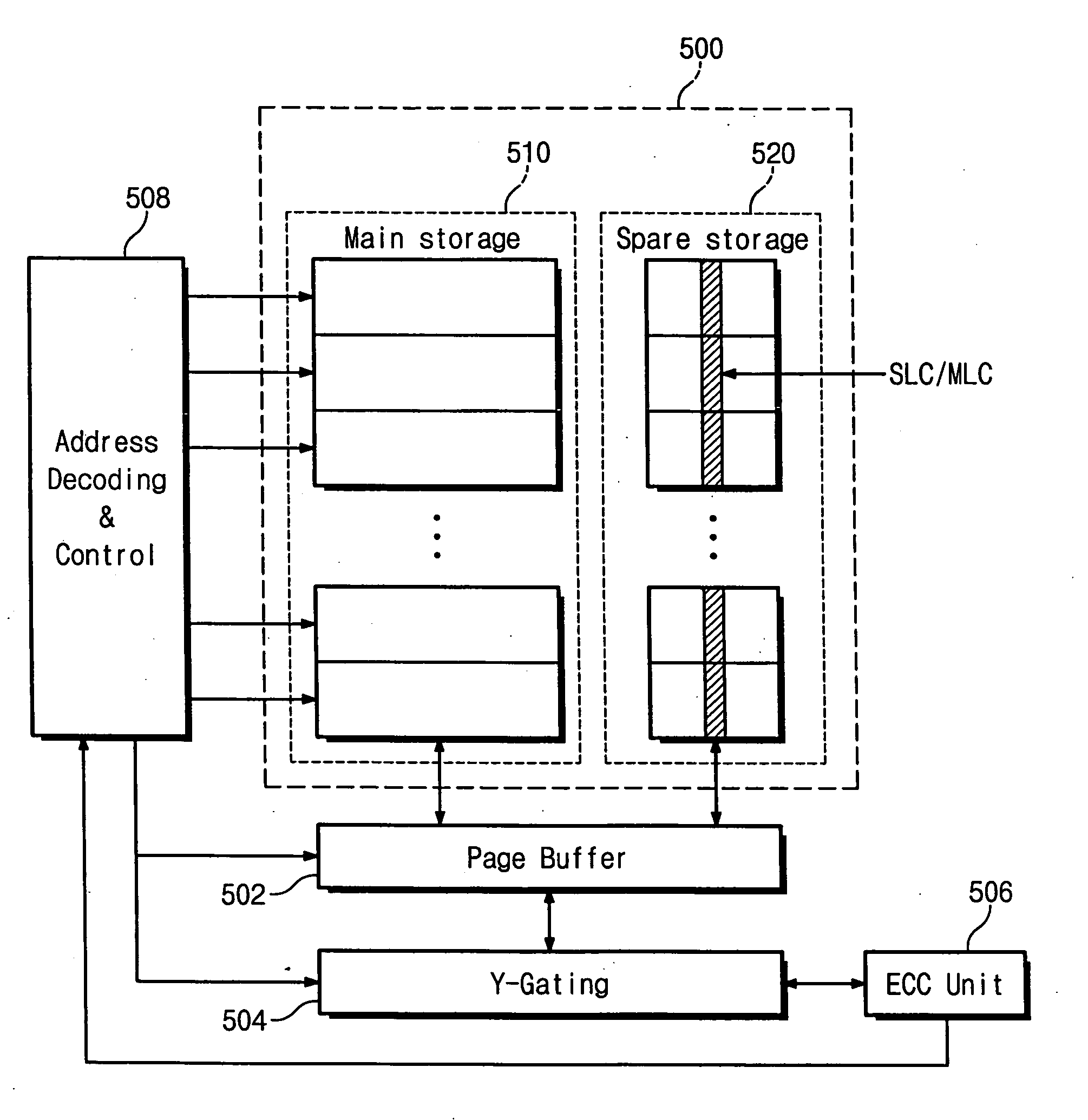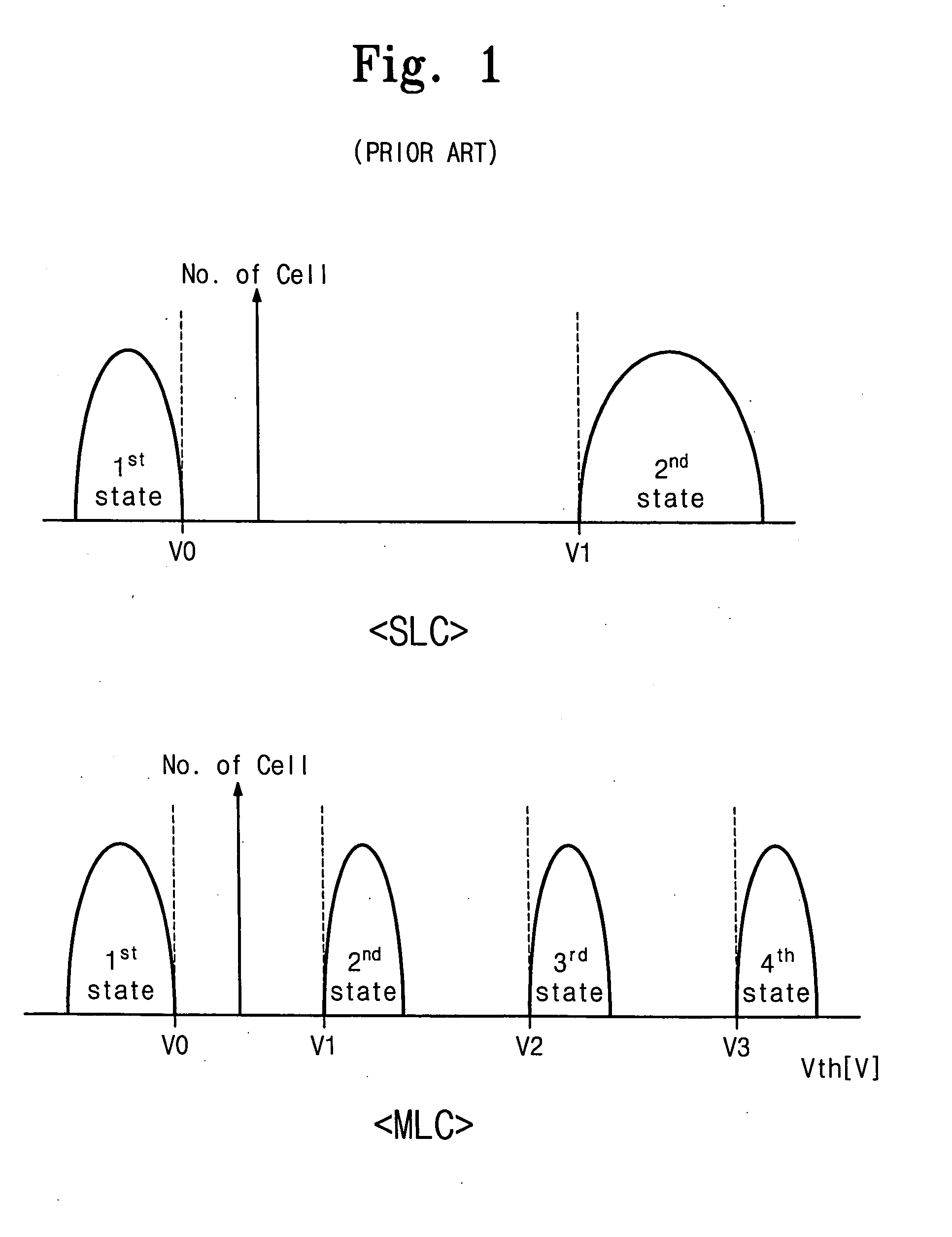Multi-bit memory device and memory system
a memory device and multi-bit technology, applied in static storage, digital storage, instruments, etc., can solve problems such as data programming errors, charge leakage from floating gate, and reduced voltage margins between various threshold voltage distributions
- Summary
- Abstract
- Description
- Claims
- Application Information
AI Technical Summary
Benefits of technology
Problems solved by technology
Method used
Image
Examples
Embodiment Construction
[0034]Embodiments of the invention will now be described in some additional detail with reference to the accompanying drawings. However, the invention may be embodied in many different forms and should not be construed as being limited to only the embodiments set forth herein. Rather, the illustrated embodiments are presented as teaching examples. Throughout the specification and drawings, like reference numbers refer to like or similar elements.
[0035]FIG. 5 is a block diagram of a nonvolatile memory including an error correction circuit (ECC) according to an embodiment of the invention. The nonvolatile memory includes a memory cell array 500, a page buffer 502, an error correction circuit (ECC) 506, an address decoding and control circuit 508, and a column gating circuit 504. Memory cell array 500 includes a plurality of memory blocks each having a plurality of nonvolatile memory cells. Page buffer 502 latches write data to be written into memory cell array 500 and read data read f...
PUM
 Login to View More
Login to View More Abstract
Description
Claims
Application Information
 Login to View More
Login to View More - R&D
- Intellectual Property
- Life Sciences
- Materials
- Tech Scout
- Unparalleled Data Quality
- Higher Quality Content
- 60% Fewer Hallucinations
Browse by: Latest US Patents, China's latest patents, Technical Efficacy Thesaurus, Application Domain, Technology Topic, Popular Technical Reports.
© 2025 PatSnap. All rights reserved.Legal|Privacy policy|Modern Slavery Act Transparency Statement|Sitemap|About US| Contact US: help@patsnap.com



